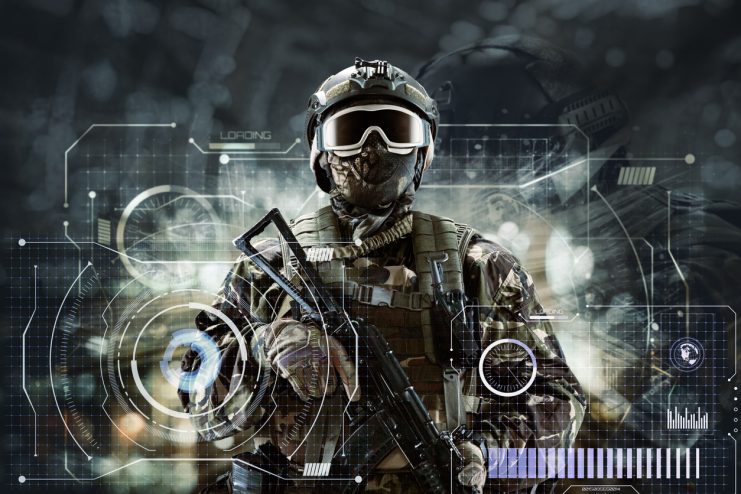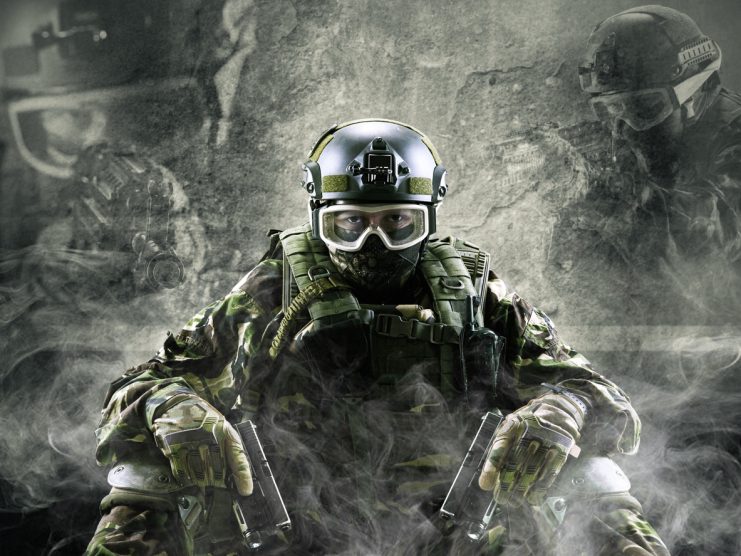The popular myth of cyborg soldiers, a warfighter enhanced with augmented tech providing bionic eyesight and superhuman battlefield performance, may soon be a reality.
According to a recent report from the Biotechnologies for Health and Human Performance Council study group there are a number of emerging technologies that could be battlefield ready by 2050.

The US Army has long been a supporter of new tech for their soldiers, however, the wars in Afghanistan and Iraq put paid to any headroom that remained in the budget for such research.
The Defence Department study looked into the feasibility of installing brain implants and their military applications alongside the ethical, legal and social questions the new tech raises.
It was predicted that symbiotic human and machine tech would become widely available in the coming decades, driven by commercial civilian interest in future communications and control apps.

One of the predictions causing most excitement envisages the ‘direct neural enhancements of the human brain for two-way data transfer’ which would be expected to translate on the battlefield to real-time interaction with assets such as weapons systems and reconnaissance drones.
These neural implants would mean better instant communication with personnel and soldiers on the ground and throughout a central network across distances, revolutionizing tactical military capabilities.
The potential speed and clarity of communication through direct data exchange through the chain of command, run via such a neural implant network, was said by the report to be aimed at ultimately blowing away the ‘fog’ of war.
The report warns that the procedures for implanting microelectrodes directly into the brain would be invasive, especially when extended across the surface of the brain.
It was recognised that the potential reversibility of such a procedure could make acceptance of these enhancements difficult for military personnel and wider society.
Specialised army units such as the Rangers or perhaps the Navy Seals may well become early adopters should it be proved that new tech can make the difference regarding ‘capability, lethality, survivability, and overall battlefield superiority’.
Research into non-invasive alternatives, such as scalp-wear, is also being investigated.
Enhanced vision tech was predicted to be battlefield ready by 2050, however this reaches a new level of invasive procedure with the entire eyeball being replaced and a data feed passing directly into the optic nerve.
![“The [study group] predicted that soldier/machine enhancement technologies will become widely available before the year 2050](https://www.warhistoryonline.com/wp-content/uploads/sites/64/2019/12/istock-637753252-741x379.jpg)
The report states that this would offer warfighters ‘enhanced computational capabilities, which would allow for target identification, selection, and data sharing with other individuals or military systems.’
The report also appears to expect that the stimulation of the brain at single neuron level will speed communication to a point not currently possible.
Some of us might be excited to see video gaming style enhancements coming to a battlefield in the near future, while others might be worried that this could mark the beginning of a slippery descent.
The report itself ends with a disclaimer that this is not current US Military policy but simply an advisory document.
Before such new tech could be employed an entire raft of new legal and ethical codes of practice would need to be developed alongside it.
The security framework required to ensure that new tech enhancements were retained in a manner that did not undermine the US Military also does not currently exist in a form that would enable their implementation.
Until such time as we see a fully tech integrated battlefield, there will be a lot more work for the Pentagon’s compliance boards to do.
The report recommends global assessments of societal awareness and perception of human-machine fusion technologies.
Another Article From Us: Abandoned Nuclear Missile Complex in Arizona For Sale $400,000
From Terminator to Star Trek to Iron Man, this tech has had many fictional iterations, but perhaps one day, in the not too distant future, our soldiers may be benefiting from imagination made real.
